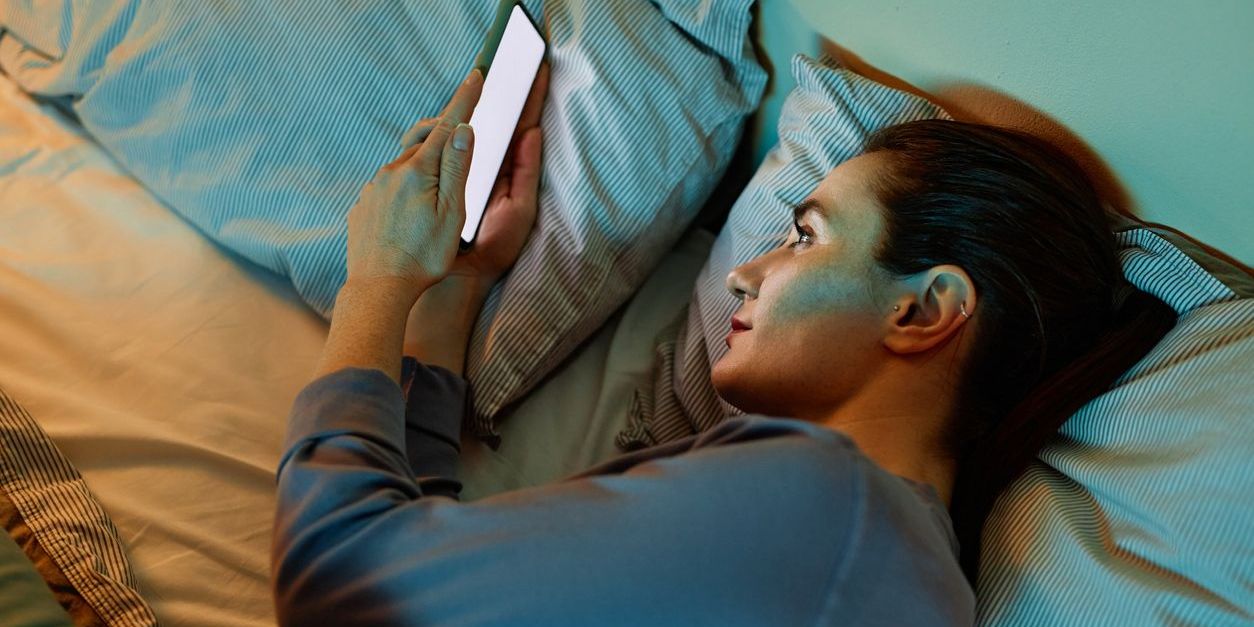Summary: Yes, staying up late is associated with several factors that can impact mental health, quality of life, and increase depression risk.
Key Points:
- Researchers defined three chronotypes: morning types, evening types, and no preference types
- Each type has a different risk profile for depression
- Behaviors like mindfulness, rumination, and alcohol use can impact depression risk
What Do We Know About Depression Risk Already?
Evidence shows the primary factors that directly increase depression risk include:
- Family history of depression
- Previous history of mental health disorder
- Major life changes, trauma, stress
- Significant physical illness or injury
To learn more basic facts about clinical depression and depression treatment, please visit the following page:
Crownview Inpatient Depression Treatment Center
We know there’s a causal link between the factors above and depression risk. In other words, evidence shows that those factors definitely increase risk: when they’re present, risk escalates, and when they’re not present, risk doesn’t escalate. However, there are also factors associated with increased depression risk, such as lifestyle, personality traits, and behaviors, that may increase depression risk in some people, but not in others. In other words, evidence shows that when they’re present, risk of depression may or may not escalate, depending on the strength of the association and other individual factors.
In this article, we’ll review a study on factors in the latter category, those with a correlative link with increased depression risk, rather than those with a direct causal link to increased depression risk. The paper “Mindfulness Mediates the Association Between Chronotype and Depressive Symptoms in Young Adults” analyzes the impact of chronotype – we’ll elaborate below – on depression risk.
Up Late With Our Thoughts: Chronotype and Depression Risk
First, we’ll explain what we mean by chronotype, as promised. Here’s a simple, easy-to-understand definition of chronotype:
“An individual’s activity-rest preference over a 24-hour period.”
And here’s an expansion of that definition, which can help us understand our discussion of the impact of chronotype on depression risk:
“Three different chronotypes are distinguished: Morning-types (M-types) and Evening-types (E-types), [and] Neither-types (N-types). A person’s chronotype lies on a continuum between morning and evening chronotype. Individuals with no pronounced circadian preference are categorized as N-types because they show intermediate characteristics.”
Evidence shows roughly 60 percent of adults are N-types, with a relatively even split between M-types and E-types making up the remaining 40 percent. Different studies show different numbers, but most place the prevalence of M and E types between 15-25 percent for each type.
Here’s what distinguishes M-types and E-type from one another:
- M-types get to sleep earlier and get up earlier. M-types show peak mental and physical performance earlier in the day.
- E-types get to sleep later and get up later. E-types show peak mental and physical performance later in the day.
We located those definitions and explanations in different sources than the study we mention in the introduction – see the links – but we’ll return to that study now. In that study, researchers review evidence that establishes connections between E-types – what they call eveningness – and depression:
- Eveningness is significantly associated with major depressive disorder (MDD)
- Statistical significance for increased MDD among E-types persists when accounting for:
- Sociodemographic factors
- Physical health
- Sleep duration
- Presence of insomnia ratings
- E-types show higher levels of depressive symptoms in individuals with a diagnosis of MDD and in individuals without a diagnosis of MDD
Based on these facts, the research team designed an experiment and recruited over 500 college to test the following hypotheses:
- E-types will show higher levels of depression, rumination, and alcohol consumption, as well as lower levels of mindfulness, and poorer sleep quality, compared to M-types and N-types.
- Rumination, mindfulness facets, sleep quality, and alcohol consumption will mediate the relationship between chronotype and depression.
Let’s take a look at what they found.
The Impact of Staying Up Late on Depression Risk
Before we continue, we need to clarify our terms, specifically rumination and mindfulness.
- Rumination: Rumination is the practice of engaging in dysfunctional, repetitive, and retrospective thoughts about negative situations or events.
- Mindfulness: Mindfulness is the ability to maintain a non-judgmental awareness of present moment.
We assume the phrases sleep quality and alcohol consumption need no explanation: they refer to how well a person sleeps and how much a person drinks. With that said, we’re ready to share the results of the study. First, let’s look at the hypothesis #1, and learn whether it was confirmed or refuted by experimental results.
Hypothesis 1: Associations Between E-Types and Depression Risk Factors
Compared to M-types and N-types, E-types showed:
- Higher levels of depressive symptoms
- Poorer sleep quality
- Lower levels of overall mindfulness, including lower levels of:
- Acting with awareness
- Describing with awareness
- Higher levels of rumination
- Higher levels of alcohol consumption.
Next, we’ll look at hypothesis #2, and learn whether rumination, mindfulness facets, sleep quality, and alcohol mediated – i.e. had any impact on – the relationship between chronotype and depression.
Hypothesis 2: Mediating Factors Between Chronotype and Depression Risk
The following factors increased depression risk:
- Mindful behavior:
- High levels of acting with awareness among E-types associated with decreased depression risk
- Low levels of acting with awareness among E-types associated with increased depression risk
- Mindful describing:
- High levels of nonjudgmental describing among E-types associated with decreased depression risk
- Low levels of nonjudgmental describing among E-types associated with increased depression risk
- Sleep quality:
- Low sleep quality among E-types associated with increased depression risk
- High sleep quality among E-types associated with decreased depression risk
- Alcohol consumption: see below
Those mediating factors help explain the connection between staying up late and increased depression risk. Participants who stayed up late but showed high ability to behave and observe mindfully did not show decreased depression risk, whereas participants who stayed up late but showed low ability to behave and observe mindfully showed increased depression risk. The same held true for mindful observing among E-types: higher levels were associated with decreased risk, while lower levels were associated with increased risk. The mediating impact of sleep quality is straightforward: E-types that managed to get high quality sleep showed decreased depression risk, compared to those who reported low-quality sleep.
Staying Up Late and Depression Risk: How This Information Helps
We need to address two things before we close: the mediating role of alcohol consumption and the mediating role of mindfulness on depression among E-types.
First point:
Data in this study showed that alcohol consumption among E-types decreased depression risk – a finding that contradicts almost all evidence on the relationship between alcohol and depression. In most cases, research connects alcohol consumption to increased depression risk. However, in this cohort, E-types consumed a moderate amount of alcohol, and did not show risk of binge or problem drinking. That forces us to review the impact of alcohol and depression, and clarify that problem alcohol use, as opposed to any alcohol use, is associated with increased risks of depression.
Second point:
Data in this study showed that the most powerful mediating influence between chronotype and depression risk was mindfulness.
We put that in bold because it’s important.
Why?
Because mindfulness is accessible to anyone, and it works. This finding is particularly relevant to anyone who likes staying up late and wants to decrease their depression risk. Here are several things about mindfulness that make it an ideal way for E-types to maintain their mental health:
- It’s easy to learn.
- Once you learn the concepts and exercises, they’re yours forever.
- It’s inexpensive.
- You can practice mindfulness anywhere, anytime.
- You can apply mindfulness concepts immediately.
Mindfulness techniques include, but are not limited to:
Mindful Meditation.
- You can practice mindful meditation seated, standing, or lying down.
Mindful Relaxation.
- Like meditation, you can apply mindful relaxation techniques in a variety of scenarios. You can use mindful relaxation while lying in bed before sleep, while seated in peaceful spot at home, while standing in line at the store, while seated in places in public that aren’t peaceful at all – in short, you can use mindful relaxation techniques in virtually any situation.
Mindful Walking.
- This is perhaps one of the greatest gifts of all. To learn more about mindful walking, refer to this excellent resource: Thich Nhat Hanh: Walking Meditation
Mindful Cooking and Eating.
- We eat every day, and therefore, if you learn about mindful eating, you have three chances every day to practice mindfulness and reduce depression risk.
Here’s an insight from the authors of the study, interviewed in the online publication Science Daily:
“With many young adults experiencing poor mental health, these study findings are particularly important. Young adults tend to stay up late and the results point to how interventions could be implemented to reduce their risk of depression.”
We’ll add that anyone who stays up late can benefit from this knowledge – not just young adults. Mindfulness is available, useful, and practical for people of all ages. And if you like staying up late, data indicates learning and practicing mindfulness can reduce your depression risk.


 Gianna Melendez
Gianna Melendez Jodie Dahl, CpHT
Jodie Dahl, CpHT